


Framed or unframed, desk size to sofa size, printed by us in Arizona and Alabama since 2007. Explore now.
Shorpy is funded by you. Patreon contributors get an ad-free experience.
Learn more.

- Baldwin 62303
- Baldwin VO-1000
- Cold
- No expense spared
- Tough Guys
- Lost in Toyland
- And without gloves
- If I were a blindfolded time traveler
- Smoke Consumer Also Cooks
- Oh that stove!
- Possibly still there?
- What?!?
- $100 Reward
- Freeze Frame
- Texas Flyer wanted
- Just a Year Too Soon
- WWII -- Replacing men with women at the railroad crossing.
- Yes, Icing
- You kids drive me nuts!
- NOT An Easy Job
- I wonder
- Just add window boxes
- Icing Platform?
- Indiana Harbor Belt abides
- Freezing haze
- Corrections (for those who care)
- C&NW at Nelson
- Fallen Flags
- A dangerous job made worse
- Water Stop
Print Emporium
Bakery Boy: 1917
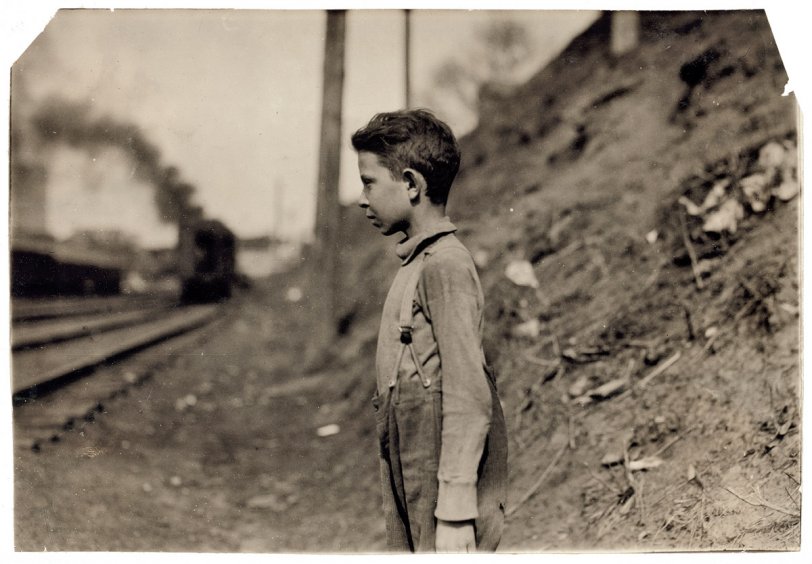
Eleven-year-old bakery worker Glenn Dungey. Oklahoma City, Oklahoma. April 1917. Photograph by Lewis Wickes Hine. View full size.
- 3 comments
- 20753 reads
Swiping Coal: 1917
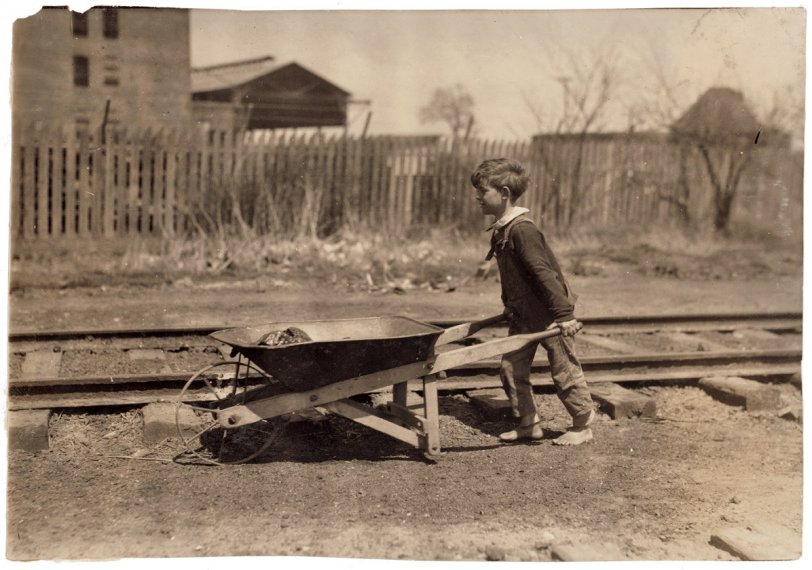
"Swipin’ coal from the freight yards." Oklahoma City, Oklahoma. April 1917. Photograph by Lewis Wickes Hine. View full size.
- 4 comments
- 20534 reads
Trapper Boy: 1908
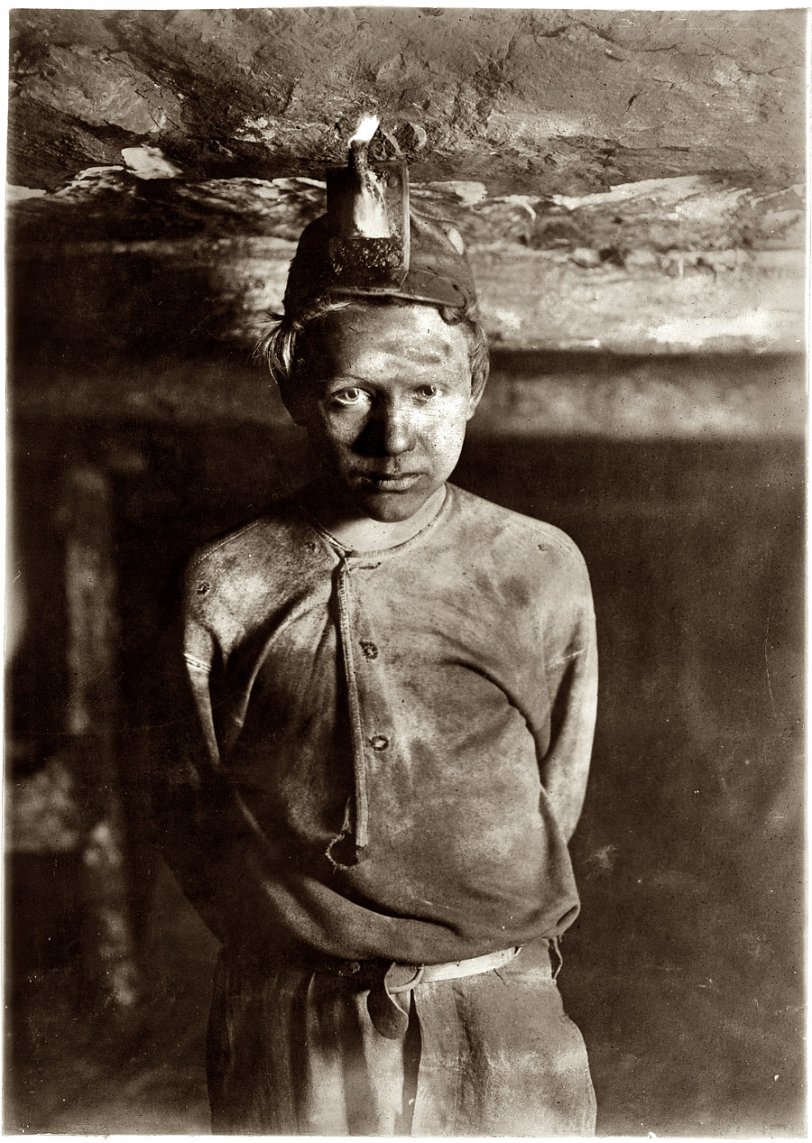
October 1908. "Trapper Boy, Turkey Knob Mine, Macdonald, West Virginia. Boy had to stoop on account of low roof, photo taken more than a mile inside the mine." Photo by Lews Wickes Hine.. View full size.
Shut This Door That Means You
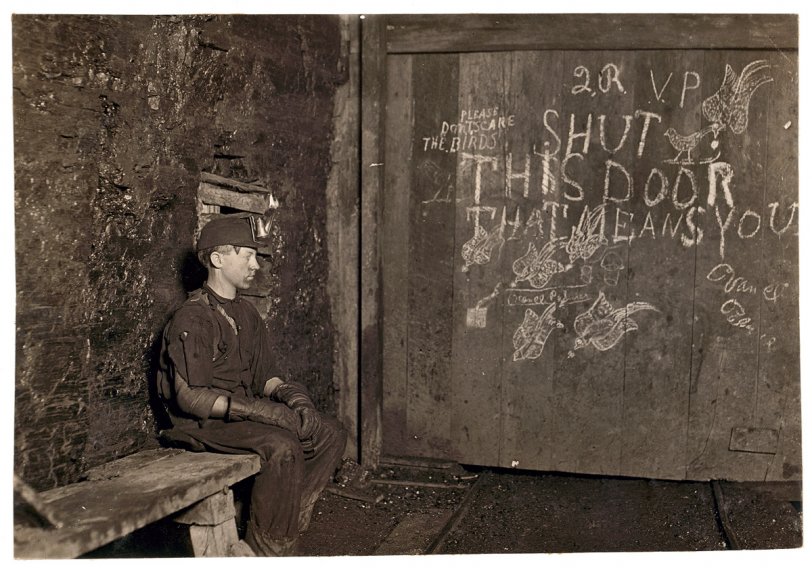
Vance, a trapper boy, 15 years old. Has trapped for several years in a West Virginia coal mine at 75 cents a day for 10 hours work. All he does is to open and shut this door: most of the time he sits here idle, waiting for the cars to come. On account of the intense darkness in the mine, the hieroglyphics on the door were not visible until plate was developed. September 1908. View full size. Photograph and caption by Lewis Wickes Hine.
One trapper's description of the job, which paid about $1.60 a day:
Trappers were responsible for opening and closing the underground ventilation doors. In those old mines, they had a system of doors between sections to direct the flow of air. Air was supposed to go up the main haulage and back to the fan. So a trapper sat all day by his door with an oil lamp on his cap. There was a "manhole" - a shelter hole in the wall by the track. The motorman would blink his light at me, and I'd throw the switch and open the door for him. Then, I'd jump into the manway until he was past, and run out and close the door. A trip would come along about every hour. Was I bored or lonely? Well, it was my job.
- 9 comments
- 54286 reads
Goes to School Now (He Says)
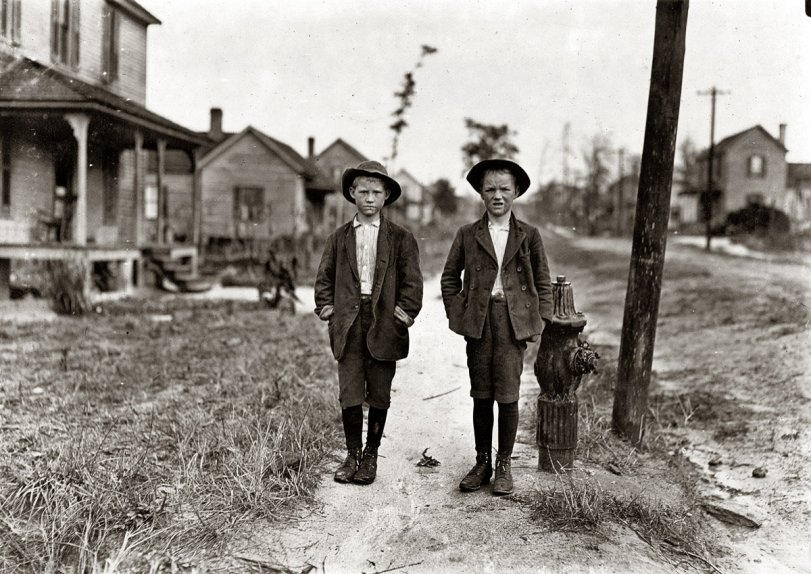
On streets near Daniel Mill. Lincolnton, North Carolina. November 1908. Right hand boy is Dan Biggerstaff. 10 years old. Has worked three years. Goes to school now (he says). Left hand, John Erwin. Said 11 years old. Has worked nights. Photograph by Lewis Wickes Hine. View full size.
- 3 comments
- 20865 reads
Paging Edward Hopper: 1940
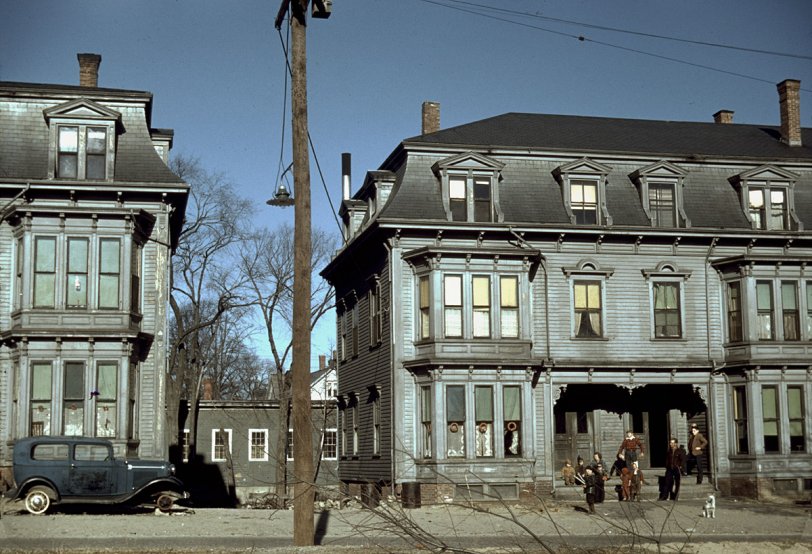
Children in the tenement district, Brockton, Massachusetts. December 1940. Photograph by Jack Delano. View full size. These duplexes must have been fairly grand when they were new, probably around the turn of the century. They look like the house where Granny and Tweety Bird lived. Are they still there?
- 18 comments
- 70777 reads
Thompson Street: 1912
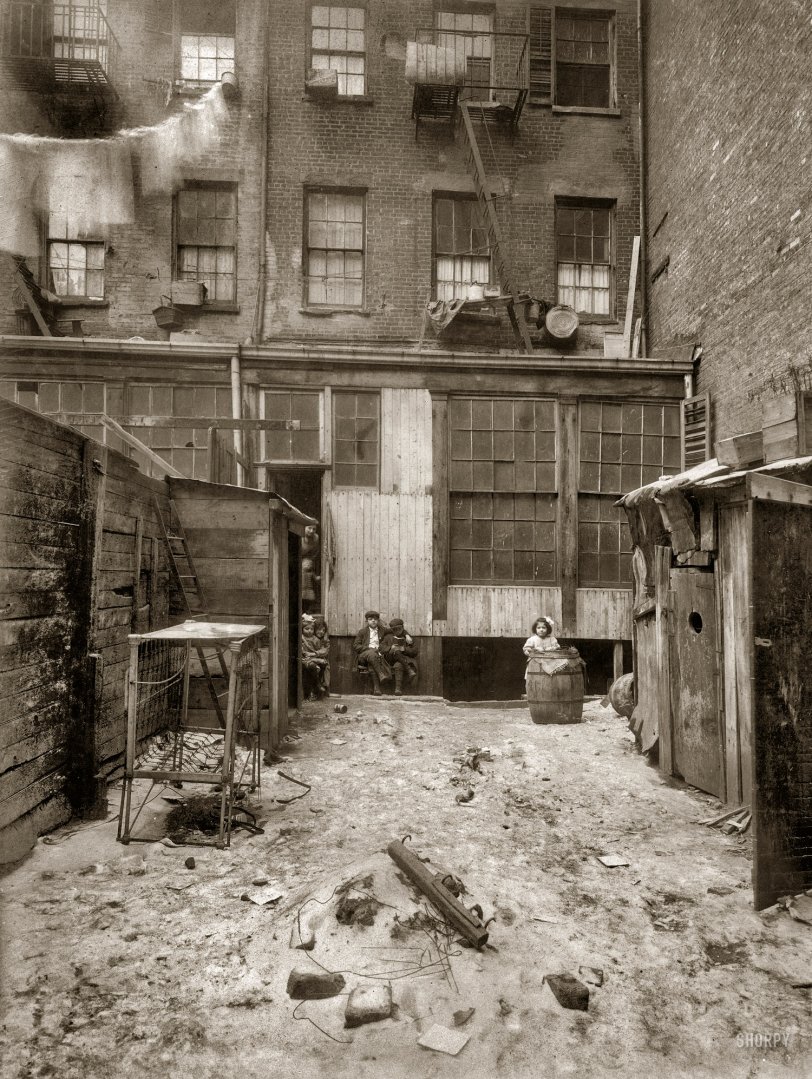
February 1912. "Rear view of tenement, 134½ Thompson Street, New York City. Makers of artificial flowers live and work here." Photograph and caption by Lewis Wickes Hine. View full size.
- 11 comments
- 46533 reads
Elizabeth Street: 1912
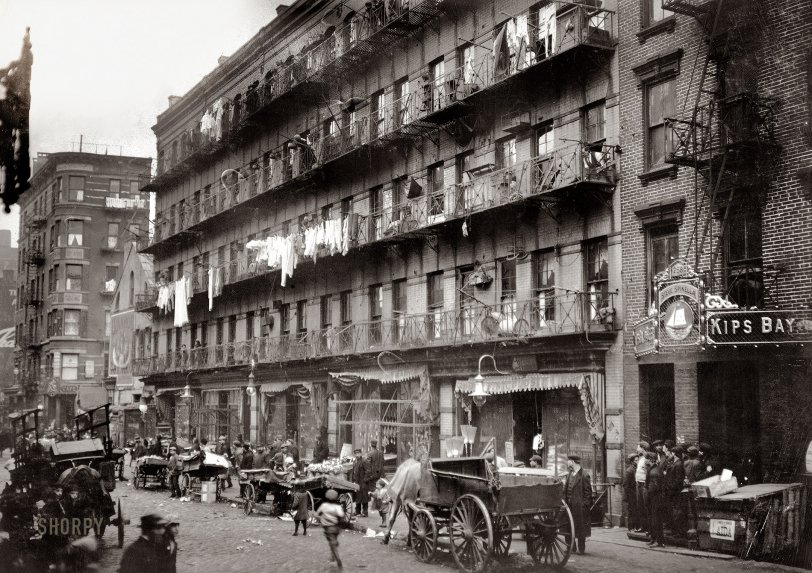
March 1912. "Row of tenements, 260 to 268 Elizabeth Street, New York, in which a great deal of finishing of clothes is carried on." 268 Elizabeth Street, in Little Italy, is now a "luxe sweater bar" called Sample; 258 (Kips Bay) is a handbag boutique called Token. Photo by Lewis Wickes Hine. View full size.
- 12 comments
- 55098 reads
Cartoners, Eastport: 1911
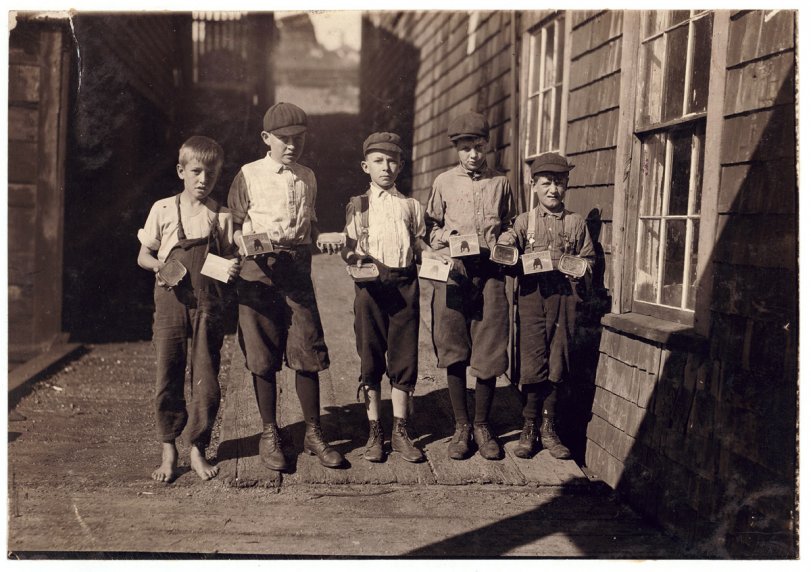
Some of the cartoners, not the youngest, at Seacoast Canning Co., Factory #2, Eastport, Maine. August 1911. Photograph by Lewis Wickes Hine. View full size.
Thomas Burgess
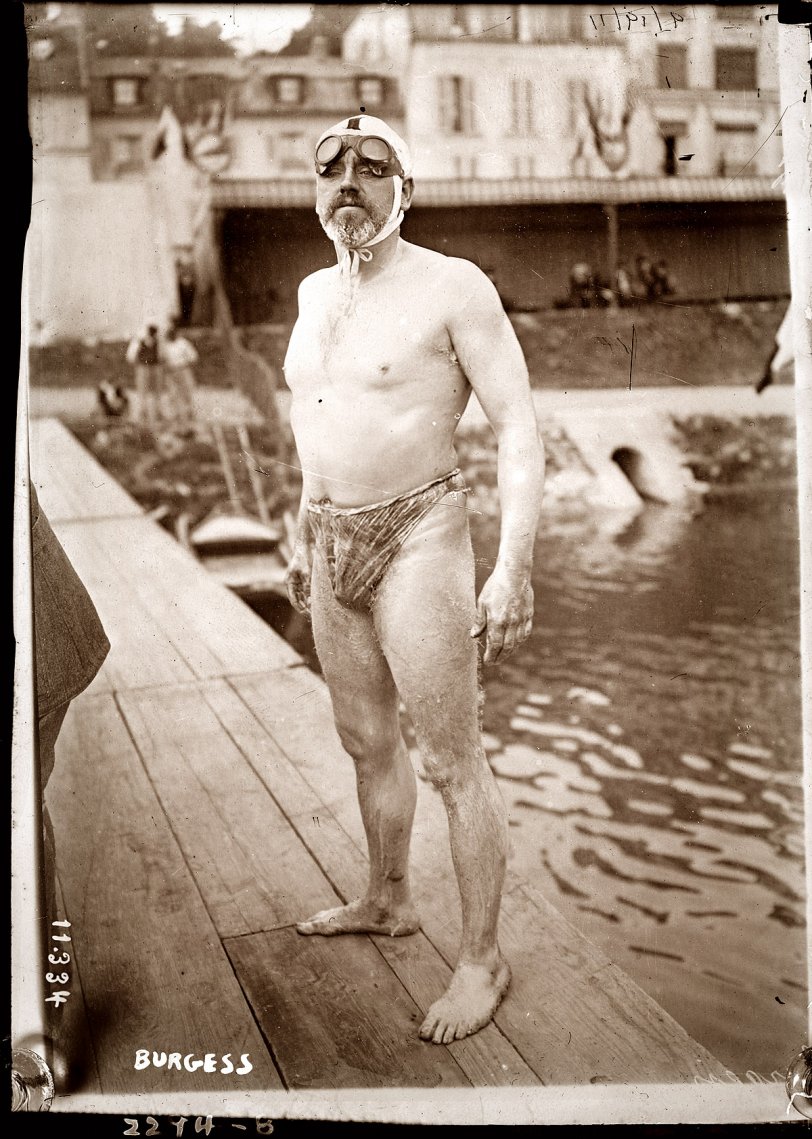
In 1911 Thomas W. Burgess was the second man to swim the English Channel. It took him 22 hours and 35 minutes. It's not clear if this photo is from that event, but he's definitely not dressed for recreational swimming. Burgess also swam for Great Britain in the 1900 Summer Olympics. George Grantham Bain Collection.
- 15 comments
- 42405 reads
Dave: 1910
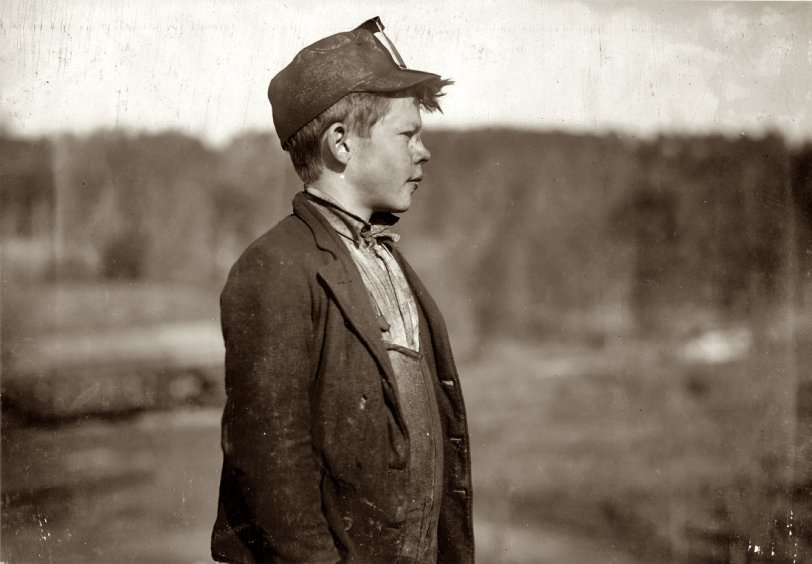
Dave, a young "pusher" at Bessie Mine. Jefferson County, Alabama. December 1910. View full size. Photograph and caption by Lewis Wickes Hine.
- 4 comments
- 24851 reads
Bleach Room Boys: 1910
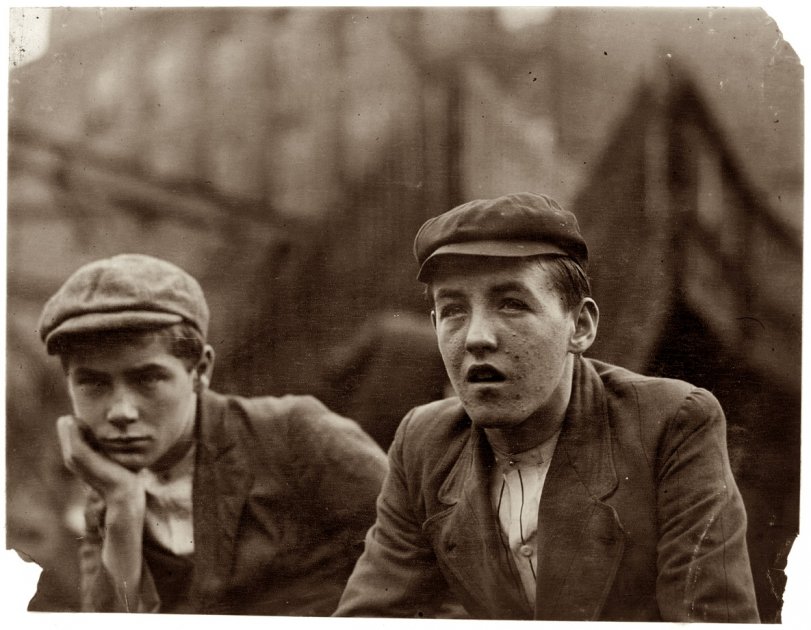
Bleach room boys, Pacific Mills. Lawrence, Massachusetts. December 1910. Photograph by Lewis Wickes Hine. View full size.
- 4 comments
- 22971 reads
Shorpy and His Friends
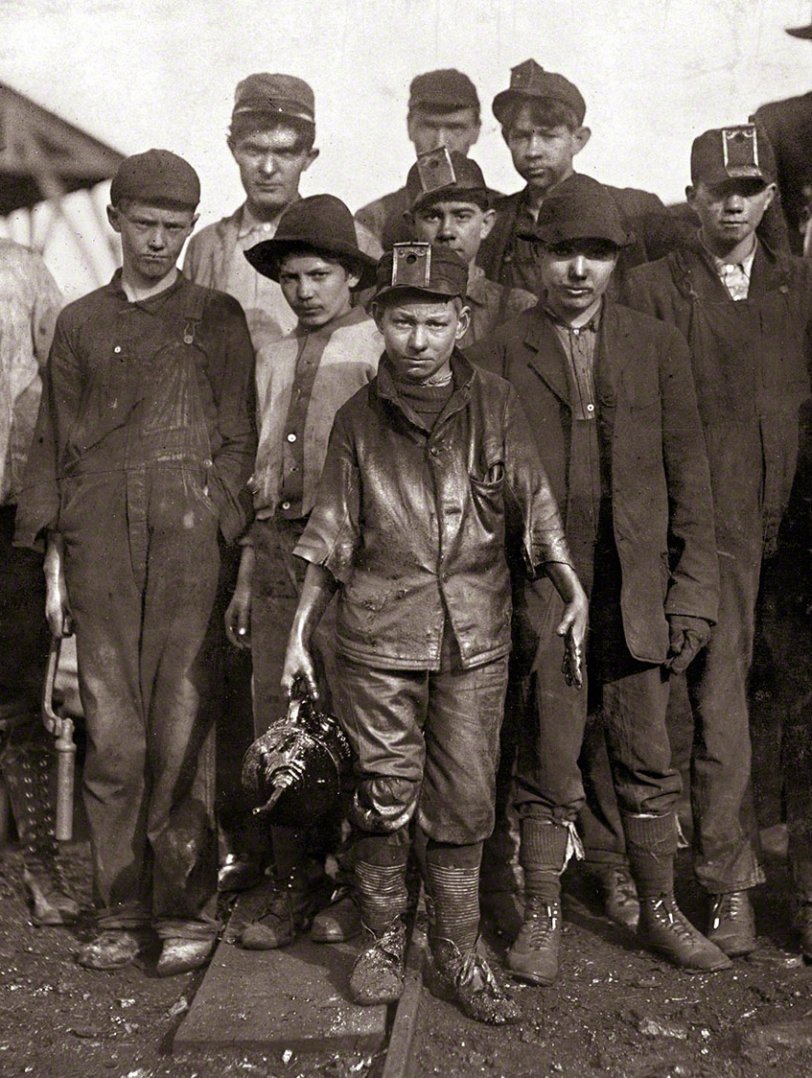
December 1910. "Shorpy Higginbotham, an oiler on the tipple at Bessie Mine" -- near Birmingham in Jefferson County, Alabama. Photograph by Lewis Wickes Hine. Entire uncropped image.
- 21 comments
- 92812 reads
Shorpy at Work: 1910
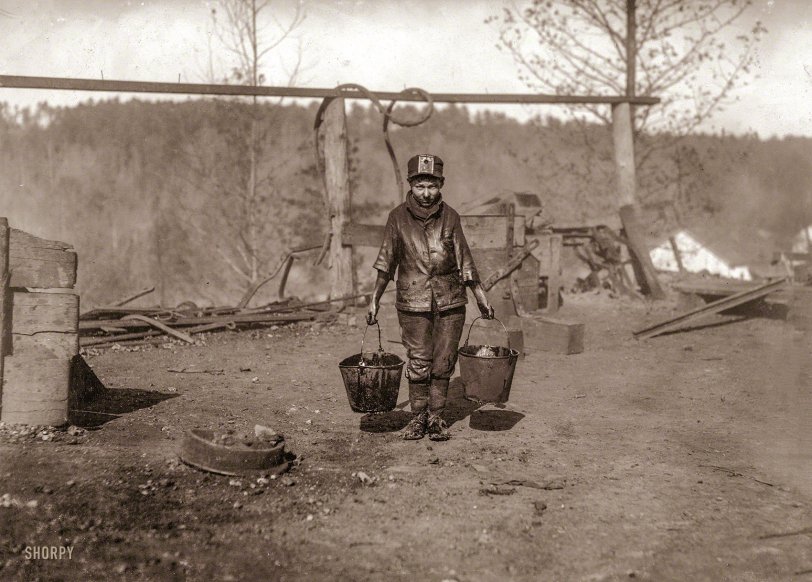
"A greaser in a Coal Mine. Location: Bessie Mine, Alabama." November 1910. View full size image or view Shorpy even bigger (cropped). This is, as far as we can tell, the first of only four photographs Lewis Wickes Hine took of Shorpy on his visit to the Bessie Mine late in 1910. (The others are here and here and here.) Almost 100 years after being taken, they retain a strange and startling immediacy even though their subject is almost certainly dead. Who were you, Shorpy Higginbotham, and whatever became of you?
- 23 comments
- 89210 reads
Ewen Breaker: 1911
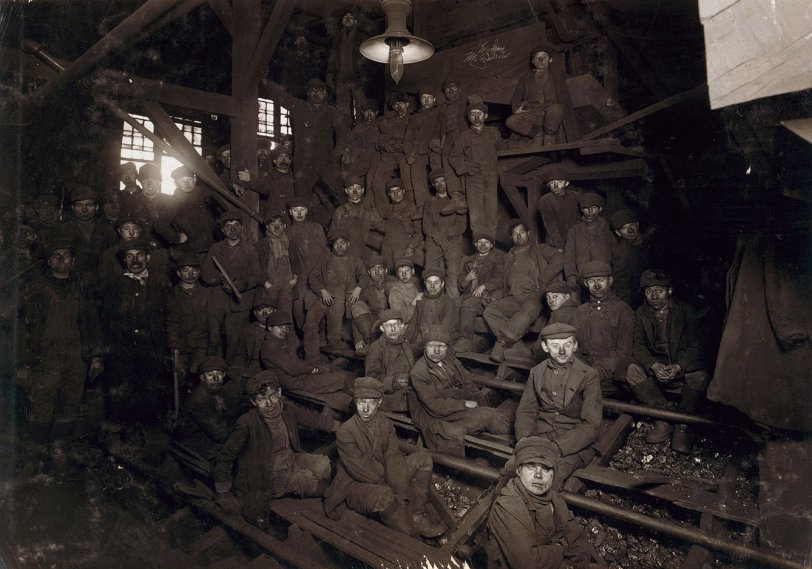
Noon hour in the Ewen Breaker, Pennsylvania Coal Co., South Pittston. January 1911. Spooky full image. Photograph by Lewis Wickes Hine.
"Breaker boys," or slate pickers, sat astride the breaker chutes, through which the coal roared, and picked out slate and other debris by hand. Boys as young as 8, working ten-hour days, began their coal careers in the breakers. They were paid less than the adults who performed the same work and faced the hazard of hand injuries or even falling into the chutes. Some breaker boys were the sons of miners who had been killed or disabled, often the only remaining source of income for their families. In 1900, boys accounted for one-sixth of the anthracite coal work force. Read a firsthand account of the breaker boys' work.
- 1 comment
- 40984 reads























